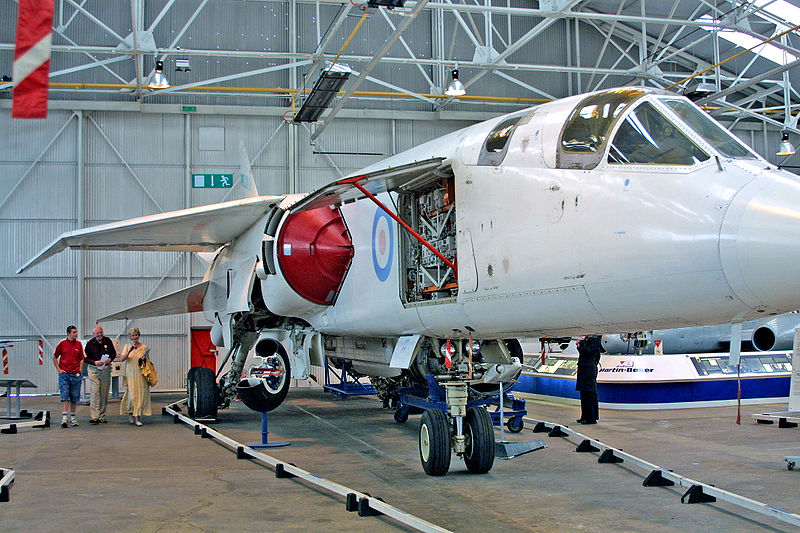 |
| The TSR-2 is a proper study of aircraft that might have been. |
Much in the vain of the North American XB-70 Valkyrie system for the United States, the TSR-2 was to be England's super Cold War bomber. The system was to provide the United Kingdom with a supersonic low-level bomber capable of delivering conventional and nuclear weapons with the utmost precision. At the outset, the TSR-2 was on pace to prove just that, had it not been for ballooning costs and bureaucratic changes at home.
 |
| The prototype BAC TSR-2 at Warton airfield in 1966. This was the only example to fly. |
The TSR-2 was a product of the English Electric and Vickers-Armstrong groups with the aim of replacing the English Electric Canberra as Britain's principle long-range, low-level supersonic bomber. The system utilized heavily the advances of swept wing technology, The TSR-2 was fielded with twin powerful Bristol-Siddeley Olympus powerplants which were fed midships through side intakes and jettisoned at rear under the single swept rudder. Wings were also swept and of the high monoplane variety. A crew of two personnel sat in tandem and were provided for with advanced controls including heads up displays, weapons systems, communications, forward and side-looking radars and integrated terrain following capabilities.
 |
| Duxford Imperial War Museum, England |
The TSR-2 proved itself enough to be ordered in production. However, before the system could reach its full gallop, rising costs in production and a change of heart in the British government's governing Labour Party forced the system and project to be mothballed as soon as 1965 - just six years after the entire project was green-lighted. At its end, the TSR-2 flew a mere 13 hours in just two dozen controlled flights and this coming from just one of the four totally complete and working versions of the TSR-2.
 |
| Nose view of TSR-2 prototype, XR222, in the Imperial War Museum at RAF Duxford. |
 |
| BAC TSR2 at RAF Museum Cosford |
Specifications for the BAC TSR-2
Dimensions:
Length: 89.04ft (27.14m)
Width: 214.24ft (65.30m)
Height: 0.00ft (0.00m)
Performance:
Maximum Speed: 835mph (1,344kmh; 726kts)
Maximum Range: 1,151miles (1,853km)
Rate-of-Climb: 0ft/min (0m/min)
Service Ceiling: 57,001ft (17,374m; 10.8miles)
Armament Suite:
Mission-specific ordnance up to 10,000lbs of internal stores.
Structure:
Accommodation: 2
Hardpoints: 0
Empty Weight:54,750lbs (24,834kg)
Maximum Take-Off Weight:102,200lbs (46,357kg)
Powerplant:
Engine(s): 2 x Bristol-Siddeley Olympus B.01.22R turbojets with afterburner generating 30,600lbs of thrust each.